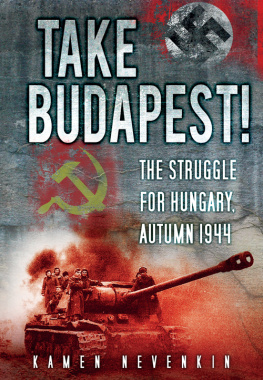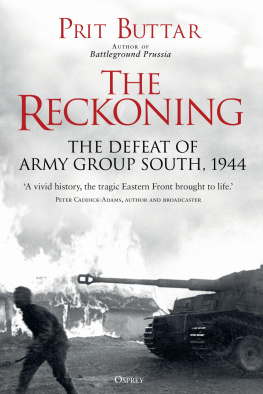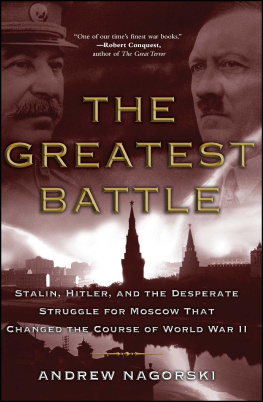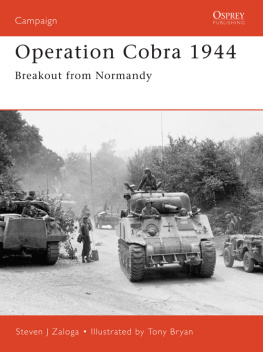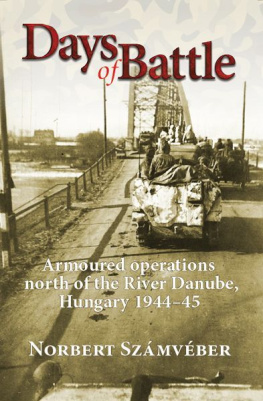
I offer my grateful thanks to the following:Alexey Filippenkov, Alexey Isaev, Artyom Astafiev (Russia); David Glantz (USA); Dnes Bernd (Hungary); Didier Laugier (France); Jan-Hendrik Wendler (Germany); Kaloyan Matev (Bulgaria); Lszl Nmedi (Hungary); Markus Reisner (Austria); Michael Wood (United Kingdom); Mikhail Filippenkov (Russia); Mirko Bayerl (Sweden); Orlin Nevenkin (Bulgaria and Belguim); Pawel Sembrat (Poland); Rashit Musin (Russia); Ron Klages (USA) who passed away in 2007; Shingo Hikino (Japan); Stefano di Giusto (Italy and Belgium); Thomas Peters, Tom Houlihan (USA).
CONTENTS
Appendix 1
1.1 Soviet Command Positions, 29 October7 November 1944
1.2 German Command Positions, 29 October7 November 1944
1.3 Hungarian Command Positions, 29 October9 November 1944
Appendix 2
2.1 Army Group South, 30/31 October 1944
2.2 Left Wing of the 2nd Ukrainian Front, 31 October 1944
2.3 Axis Ground Troops in Hungary and Neighboring Areas, 5 November 1944
2.4 2nd Ukrainian Front, 7 November 1944
2.5 Army Group South Troop Assignments and Subordinations, 29 October6 November 1944
2.6 2nd Ukrainian Front Troop Assignments and Subordinations, 29 October6 November 1944
2.7 German Auxiliary Staff Assigned to Hungarian Formations, 28 October 1944
Appendix 3
3.1 Army Group South, 27 October 1944
3.2 2nd Guards Mechanised Corps, 29 October 1944
3.3 Strength of 46th Army, 1 November 1944
3.4 Firepower of the Combat Troops of 46th Army, 1 November 1944
3.5 Strength of 4th Guards Mechanised Corps, 1 November 1944
3.6 Ratio of Forces, 2nd Ukrainian Front, 1 November 1944
3.7 Ratio of Forces, Army Group South Sector (German View), 1 November 1944
3.8 German Armoured and Mobile Forces Subordinated to Armeegruppe Fretter-Pico, 1 November 1944
3.9 Status Report of the Divisions of Armeegruppe Fretter-Pico and 2.Army (Hung), 4 November 1944
3.10 Strength of the Armoured Divisions of Armeegruppe Fretter Pico at the Beginning of November 1944
Appendix 4
4.1 Tank Inventory of the 2nd Ukrainian Front, 29 October 1944, 06:00
4.2 Armoured Inventory of Army Group South, 31 October 1944
4.3 Panzer Inventory of Armeegruppe Fretter-Pico, 1 November 1944
4.4 Panzer Inventory of Armeegruppe Fretter-Pico, 3 November 1944
4.5 Panzer Inventory of Armeegruppe Fretter-Pico, 4 November 1944
4.6 Panzer Inventory of Armeegruppe Fretter-Pico, 5 November 1944
4.7 Armoured Vehicle Roster of the 2nd Ukrainian Front, 5 November 1944
4.8 Panzer Inventory of Armeegruppe Fretter-Pico, 6 November 1944
4.9 Tank Inventory of the 2nd Ukrainian Front, 7 November 1944, 06:00
4.10 Panzer Inventory of Armeegruppe Fretter-Pico, 7 November 1944
Appendix 5
5.1 Non-operational Armour (as per 5 November) and Losses of 46th Army and 7th Guards Army, 29 October5 November 1944
5.2 Non-operational Armour (as per 10 November) and Losses of 46th Army and 7th Guards Army, 29 October10 November 1944
5.3 Losses of the 2nd Guards Mechanised Corps, 29 October6 November 1944
5.4 Losses of 4th Guards Mechanised Corps, 18 November 1944
Appendix 6
6.1 Claims of 2nd Guards Mechanised Corps (Damage Done to the Enemy), 29 October6 November 1944
6.2 Claims of 4th Guards Mechanised Corps (Damage Done to the Enemy), 16 November 1944
6.3 Claims of 46th Army (Damage Done to the Enemy), 29 October7 November 1944
6.4 Claims of Armeegruppe Fretter-Pico (Damage Done to the Enemy) in the Area of KecskemtBudapestSzolnok, 29 October9 November 1944
Appendix 7
7.1 Strength of the German Combat Air Units of Air Fleet 4, 31 October 1944
7.2 Strength of the Hungarian 102 Air Brigade, 31 October 1944
7.3 Deployment of 5th Air Army Air Units, 1 November 1944
7.4 Combat Strength of 5th Air Army, 4 November 1944
7.5 The Air War, 29 October7 November 1944
Appendix 8
8.1 Soviet Looting
8.2 Romanian Crimes
8.3 Soviet Rapes
8.4 German Looting
Appendix 9
9.1 Soviet Representation to the Head of the Hungarian Peace Delegation in Moscow
9.2 Order of the Commander of the 4th Ukrainian Front Concerning the Treatment of Hungarian Officers and Soldiers Joining the Red Army
9.3 Appeal of the Red Armys Command to the Population of the Liberated Territory of Hungary
9.4 After Action Report of Heavy-Panzer Battalion 503
Few military operations conducted during the Soviet-German War 19411945 had more varied dimensions and significance than the Red Armys offensive in Hungary, which began in October 1944, and the ensuing siege of Hungarys capital, Budapest, on the Danube river. Militarily, this offensive, together with the siege of Budapest and German counteractions designed to restore its fortunes in the Danube basin, represented the culminating stage of offensive operations the Soviet Army began in August 1944 to drive Axis forces from the entire Balkans region. Politically, the offensive was a Soviet attempt to continue the dissolution of Hitlers Axis alliance by driving Hungary from the war. Economically, the offensive began a five-month-long struggle for possession of Budapest and the nearby vital oilfields of the Lake Balaton region, which provided much of the fuel for the panzers and aircraft of Hitlers Army and Luftwaffe. Underscoring the significance of this and other operations in Hungary and Austria, in early February 1945 Stalins Red Army would shift the focal point of its strategic offensive operations away from the approaches to Berlin and towards western Hungary and Vienna in the heart of the strategically vital Danube basin.
Kamen Nevenkins new book examines one aspect of this five-month struggle, specifically, the Red Armys attempts to reach and seize Budapest by a coup de main in late October and early November 1944. After accurately detailing both Hitlers and Stalins fixation on Budapest, as well as their respective strategies for seizing or retaining the region, Nevenkin provides a riveting narrative of the ensuing combat during the Red Armys initial drive to capture the city. He exploits a wide range of newly available Russian archival materials and long-existing but only weakly exploited German unit records, juxtaposed against a host of old and new memoirs by commanders and private soldiers alike, to track the course of the offensive during late October and early November from both the German and the Soviet perspectives. Unlike previous accounts, where known German formations fought against ghostlike Russian masses, this study brings alive the actions of specific forces on specific days and the successes and frustrations experienced by each side and their commanders and soldiers.
This is operational military history at its best, where commanders lead identifiable forces, successfully or unsuccessfully, on a recognisable battlefield of villages, towns, and open spaces. On this battlefield, as always, the customary fog of war rules, replete with examples of successes, failures, surprises, and inevitable human frustration. This lively narrative is backed up by clear and understandable maps so necessary to dispel the fog and explain to the reader what actually happened and why.
This reader hopes that this volume is only the first of many intended to lift the veil on all of the operations conducted in the Budapest region from their beginning to their end in March 1945.
David M. Glantz
Carlisle, Pennsylvania
[Before retiring from the US Army in December 1993, Colonel David M. Glantz served for over 30 years in various field artillery, intelligence, teaching, and research assignments in Europe and Vietnam, taught at the United States Military Academy, the Combat Studies Institute and Army War College. He founded and directed the US Armys Foreign (Soviet) Military Studies Office. He has written or co-authored more than 60 books as well as hundreds of articles on Soviet military strategy, intelligence, and deception and the history of the Red Army, Soviet military history, and World War II.]
Next page
